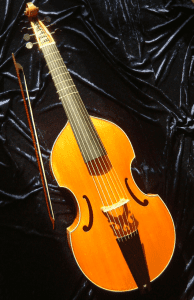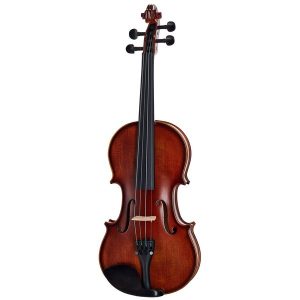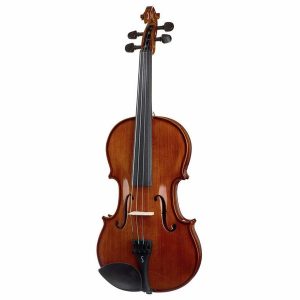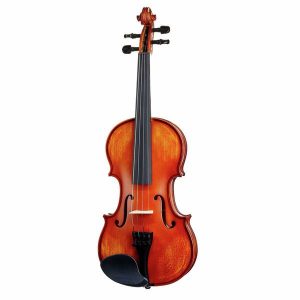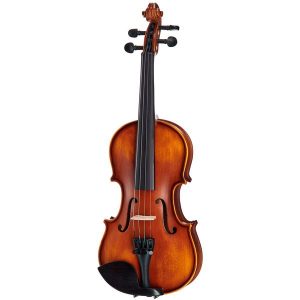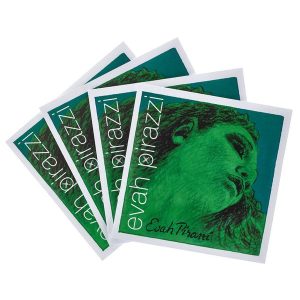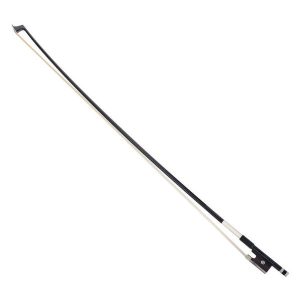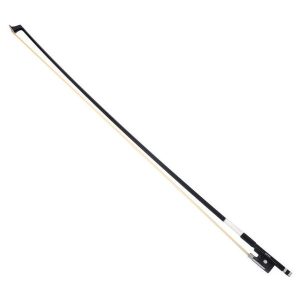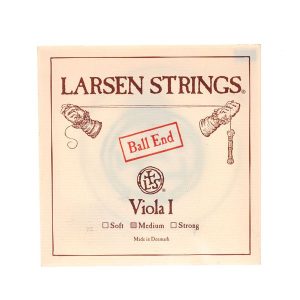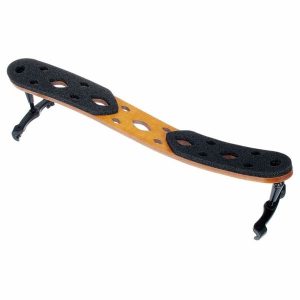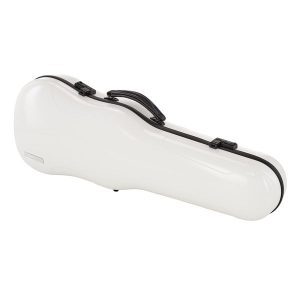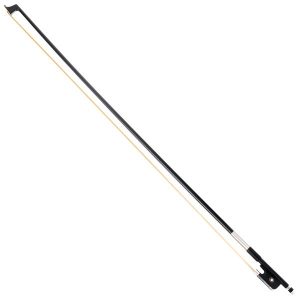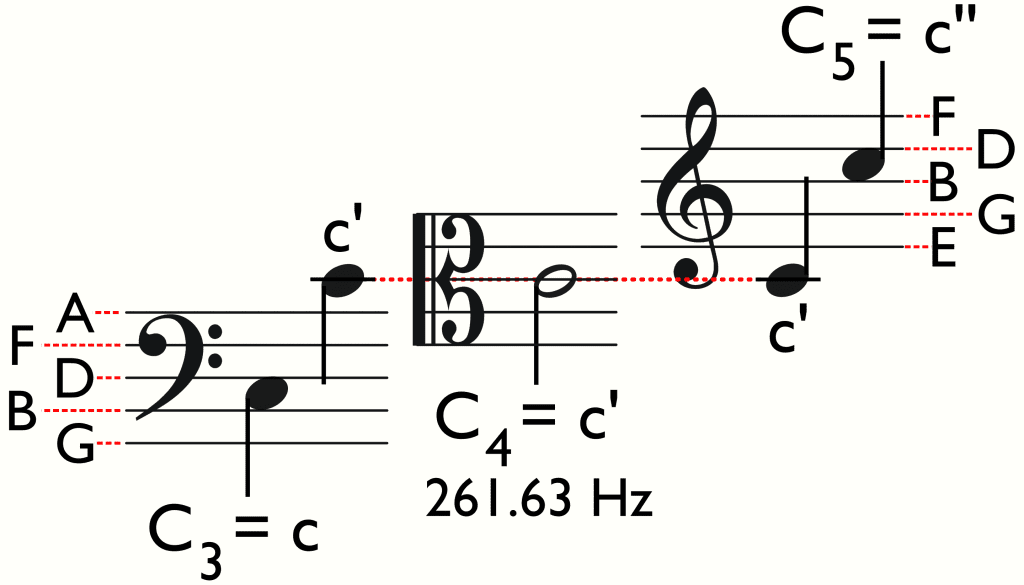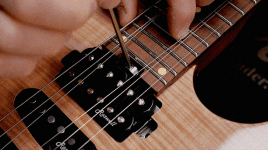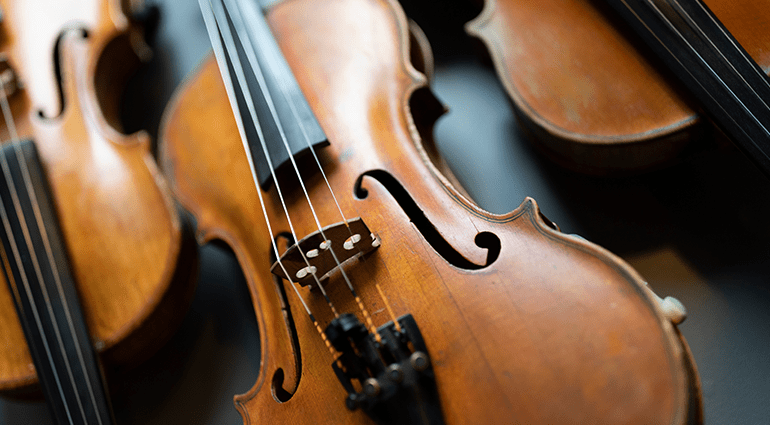
The violin and viola are very similar. Both belong to the string instrument family, are held under the chin, and are played with a bow. Two musical sisters who could not sound more emotional and charming. Nevertheless, there are fundamental differences between the violin and viola that give each instrument its own unique character.
From highly emotional to impulsive
All differences between the violin and viola aside, they both share an immense musical expressiveness that has made them indispensable in orchestras, small ensembles, and as solo instruments. Due to its larger size, the viola sounds lower than the violin. While the violin is a soprano instrument, the viola is an alto instrument. The sound of a viola is often described as deep, soft, and highly emotional. The violin, on the other hand, is the highest-pitched member of the string family. Its impulsive sound soars above all other instruments, making it ideal for leading the melody.
You are currently viewing a placeholder content from YouTube. To access the actual content, click the button below. Please note that doing so will share data with third-party providers.
The origin of today’s viola: viola da braccio
Before we get to the differences between the violin – also colloquially referred to as fiddle – and viola, we need to look at two different kinds of violas. Let’s get this out of the way before the differences between violin and viola blow up in our faces. The term “viola” is derived from the Italian “viola da braccio”, which means “arm violin”. This instrument is held under the chin like a violin and is the current standard when we talk about the viola.
You are currently viewing a placeholder content from YouTube. To access the actual content, click the button below. Please note that doing so will share data with third-party providers.
The “other” viola is the “viola da gamba” or “viol”, which in turn is known as the knee violin, leg violin, or lap violin and – you guessed it – is played completely differently. The viola da gamba also has more strings, is tuned differently, and is quite difficult to play. Rarely used nowadays, the viol is a historic instrument that we don’t really need to concern ourselves with when comparing the differences between modern violins and violas.
- Viol („Viola da gamba“)
- Violin („Viola da braccio“)
© Wikipedia
Little sister and big sister – a magical symbiosis
The first obvious difference between violin and viola is the size. The body of a 4/4 violin is usually around 35 to 36 centimetres long, whereas the viola can measure between 39 and 45 centimetres. And no, the violin didn’t shrink in the washing machine. It was deliberately designed that way for tonal reasons. That’s just the way it is.
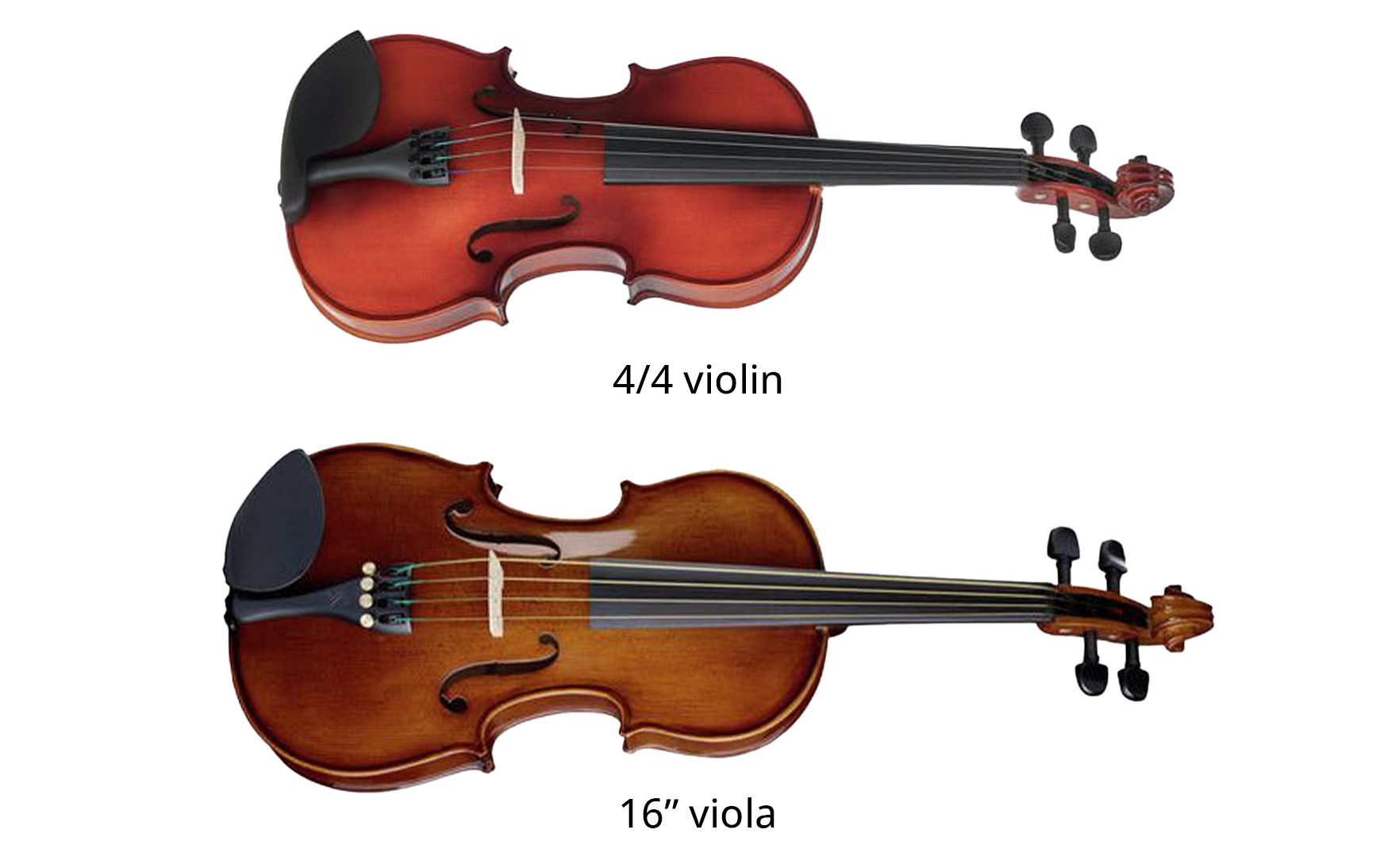
Differences between violin and viola
Playing the violin and viola as a beginner
Fortunately, both the violin and the viola are available in smaller sizes suitable for children. Even a full-size 4/4 violin can be too large for a kid’s hands, and the larger viola even more so. With smaller 7/8, 3/4, 1/2, 1/8, and other so-called fractional sizes, children can easily take the first steps on the violin or viola.
- 3/4 – Thomann 70th Annivers. Violin Set
- 7/8 – Stentor SR1500 Violin Student II
- 1/2 – Startone Student III Violin Set
- 1/4 – Thomann Student Violinset
🎻 shop all violins and violas 🎻
Strings and tuning and how they affect the playing style
Both the violin and the viola have four strings. But don’t assume that they’re “nearly identical”; they are not. To be more specific, the viola is tuned a fifth lower than the violin. This also means that the strings of the viola are thicker than those of the violin, which affects the way it is played. The thicker strings of the viola da braccio require a faster hand, faster bowing, and a heavier bow weight.
- Pirastro Evah Pirazzi Violin 3/4-1/2 M
- Gewa Advanced Carbon Violin Bow 4/4
- Artino Violin Bow 4/4 Special Edition
🎻 shop all accessories for violins 🎻
Tuning the violin and viola
The strings of the violin are tuned in fifths to the notes g | d1 | a1| e1. It is customary to tune the A string to 440 Hz first, followed by the D string, then the G string, and finally the E string.
On the viola, the four strings are also tuned in intervals of fifths, namely to c | g | d1 | a1. The three higher strings of the viola correspond to the three lower strings of the violin.
- Larsen Viola Single Str. A Medium BE
- Pirastro Korfker Rest Viola Model 2
- Gewa Air Viola Case 2.0 WH
- Roth & Junius RJB Composite Viola Bow BK
Despite the different tuning, you’ll also focus on the A string first when tuning the viola. This then serves as the reference pitch for everything else. When tuning both instruments, make sure that the bridge does not shift towards the fingerboard or becomes otherwise misaligned. By the way, the last movement of the pegs when tuning the violin or viola should always be an upward movement. This helps to ensure that the instrument stays in tune.
🎻 shop all accessories for violas 🎻
Reading violin and viola music: soprano or alto clef
Another difference between the violin and viola is the clef in which the two instruments are notated, played, and read. The violin is written in treble clef, which is also known as soprano clef, whereas the viola is written in alto clef.
This means that switching between the violin and viola requires a bit of adjustment when it comes to reading. However, this usually isn’t much of a problem, especially as the fingering – apart from the distances on the fingerboard – is almost identical.
Out of musical conviction – we carry them all
Did we mention that you can discover the complete range of violins and violas in various sizes and designs from popular brands at great prices and that no instrument leaves our warehouse without being checked by our in-house luthiers? Playing the violin and viola is an exciting adventure. It must be experienced and lived.
Sie sehen gerade einen Platzhalterinhalt von Standard. Um auf den eigentlichen Inhalt zuzugreifen, klicken Sie auf den Button unten. Bitte beachten Sie, dass dabei Daten an Drittanbieter weitergegeben werden.
We wish you lots of fun playing the violin or viola – make the most of it! Feel free to tell us about your progress and successes in the comments!
You are currently viewing a placeholder content from Facebook. To access the actual content, click the button below. Please note that doing so will share data with third-party providers.
More InformationYou are currently viewing a placeholder content from Instagram. To access the actual content, click the button below. Please note that doing so will share data with third-party providers.
More InformationYou are currently viewing a placeholder content from X. To access the actual content, click the button below. Please note that doing so will share data with third-party providers.
More Information